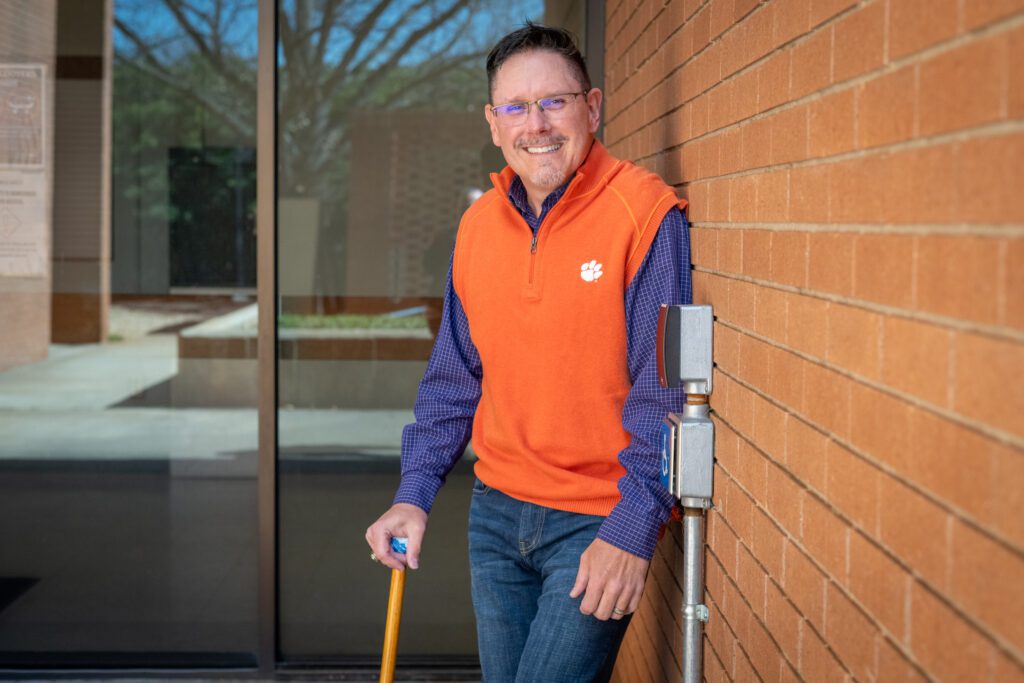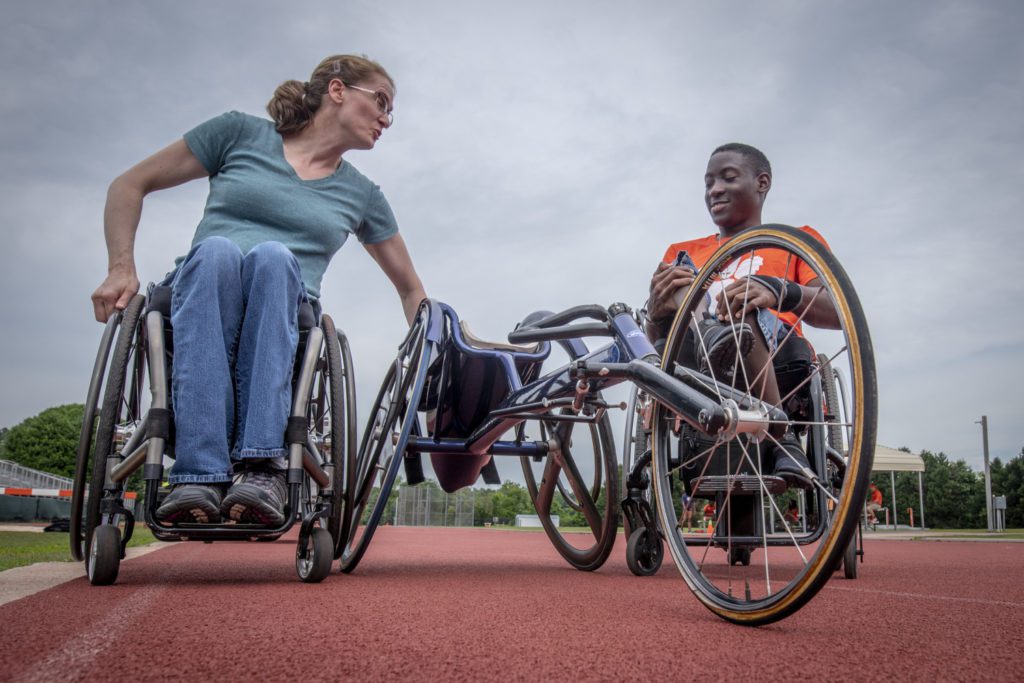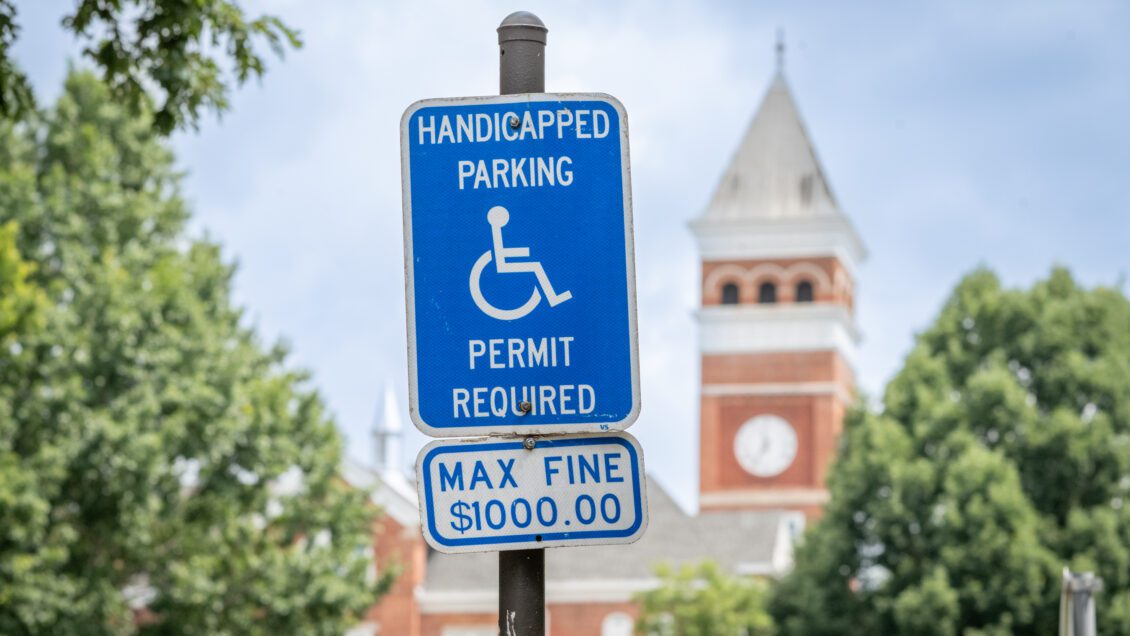July 26th marks the 35th anniversary of the Americans with Disabilities Act (ADA), which mandates equal opportunity for and prohibits discrimination against individuals with disabilities. The ADA arguably initiated the most sweeping and impactful changes of any law in history, from business practices to infrastructure, and transformed the public perception of people with disabilities. It also gives disabled persons who experience discrimination the same legal recourse as those who faced discrimination because of race, color, sex, national origin, religion and age.
“Before the ADA, the U.S. lacked comprehensive legislation protecting the civil rights of people with disabilities,” says Dan Lewis, Clemson’s director of digital accessibility. “While Section 504 of the Rehabilitation Act provided coverage for organizations that received federal funding, discrimination based on disability was not illegal in many other spaces. The ADA covers employment, transportation, public entities, business open to the public, telecommunications, and other aspects of daily life.”
Clemson remains committed to accessibility and aims to “create an inclusive environment that accommodates diverse needs and promotes equal access to information, facilities and activities for everyone.” The University offers many resources to students, faculty and staff who live with a disability.
“An accessible environment is essential for academic success, whether it’s access to facilities or online resources. The ADA serves as a cornerstone for the civil rights of people with disabilities and a nondiscrimination standard,” says Lewis.
Experiencing Clemson as a disabled person
Billy Edwards, director of Clemson’s Center for Behavior Analysis, was born with cerebral palsy and has been with the University for 13 years. His work focuses on pursuing scientific approaches to understanding behavior and the environmental factors influencing behavior. The field pursues research-based interventions for individuals identified as having Autism Spectrum Disorder and other Developmental Disabilities and differences.

“As an older campus, Clemson has inherent challenges that must be overcome, so I feel like it’s important for me to also be realistic in knowing that there will be challenges, and those challenges are not directed at me or any other person with a disability,” Edwards says of his experience as a disabled person on campus. “We have a wonderful group of people in various positions at Clemson who are focused on accessibility. While nothing is perfect, I have 100 percent confidence in those people to be as proactive and responsive as possible when needs arise.”
When it comes to the challenges of living with cerebral palsy, Edwards says he is fortunate to be ambulatory, but he still has limitations in terms of stamina, where he can go, how far he can walk, and how much time to allow.
“If I were not with an employer who tries not only to be compliant but to also be proactive and responsive, my ability to not only work safely, but to also be productive, would be significantly impacted,” he says, noting that his most common obstacles relates to parking, and in general, the level of planning required for him to execute physical tasks that most people take for granted.
“I have to be more considerate of time than most people, and allow the proper amount of time to get from point A to point B. For example, even just entering Barre Hall requires me to watch each step I take as I walk through the parking lot or on the sidewalk because the ground can be sloped,” he explains. “If I am going to have a meeting with someone in Brackett Hall, I opt to use the phone, Teams, or Zoom rather than going to Brackett because A: I cannot walk that far, and B: I don’t want to risk losing my parking space in the Barre lot.”
Edwards says that, overall, Clemson has done a good job making the campus accessible to all.
“We have been very successful in the context of disability awareness and have been cutting edge with regards to digital accessibility, parking and transportation, services for staff, faculty, and students with disabilities, and ADA training,” he says. “It’s important to remember that disabilities are not bound by gender, race, or ethnicity and can impact anyone at any given time.”
Clemson’s mission under the ADA
Erica Walters, director of the University’s celebrated ClemsonLIFE (Learning is For Everyone) program, says the life-changing program would not be possible without the ADA.
“The ClemsonLIFE program offers a transformative collegiate experience, designed to prepare young adults with intellectual disabilities for competitive employment and independent living within a university environment,” Walters explains. “Through a comprehensive approach that combines academics, independent living skills, employment readiness, and social/leisure development, the program empowers students to thrive as self-sufficient adults. This would not be possible without the vital foundation established by the ADA.”
Walters says weaving ClemsonLIFE into the fabric of the University is one of the best things it has done for accessibility.

“ClemsonLIFE students are part of the Clemson University community,” says Walters. “Being fully integrated in all aspects of student life from Greek life, student government, and intramural sports to housing, and in the classroom, Clemson does it right. ClemsonLIFE students are part of the norm on campus.”
Both Edwards and Lewis say that Clemson has come far in its mission to be accessible to all, but there is always room for improvement. Some deaf people, for instance, feel that the legislation is still insufficient for those with hearing disabilities, partly because deaf people were not involved in the inception of the ADA.
“I would say, in general, that the planning processes, including initiatives, development, construction, etcetera, could be significantly enhanced by involving persons with disabilities at the beginning stages of conceptualization,” says Edwards. “This would afford a more proactive approach that is not only focused on compliance but more on inclusivity and universal design in addition to compliance.”
Lewis says that Clemson continues to improve accessibility in many areas, from physical spaces like sidewalks and entryways to digital spaces like websites and electronic documents, but notes that perhaps the most significant challenge any institution faces is raising awareness and reframing perceptions to create a cultural change. He’s confident Clemson will continue to evolve and improve. “Every day, more and more people understand their role in creating an environment that works for our students, faculty and staff, regardless of disability.”

